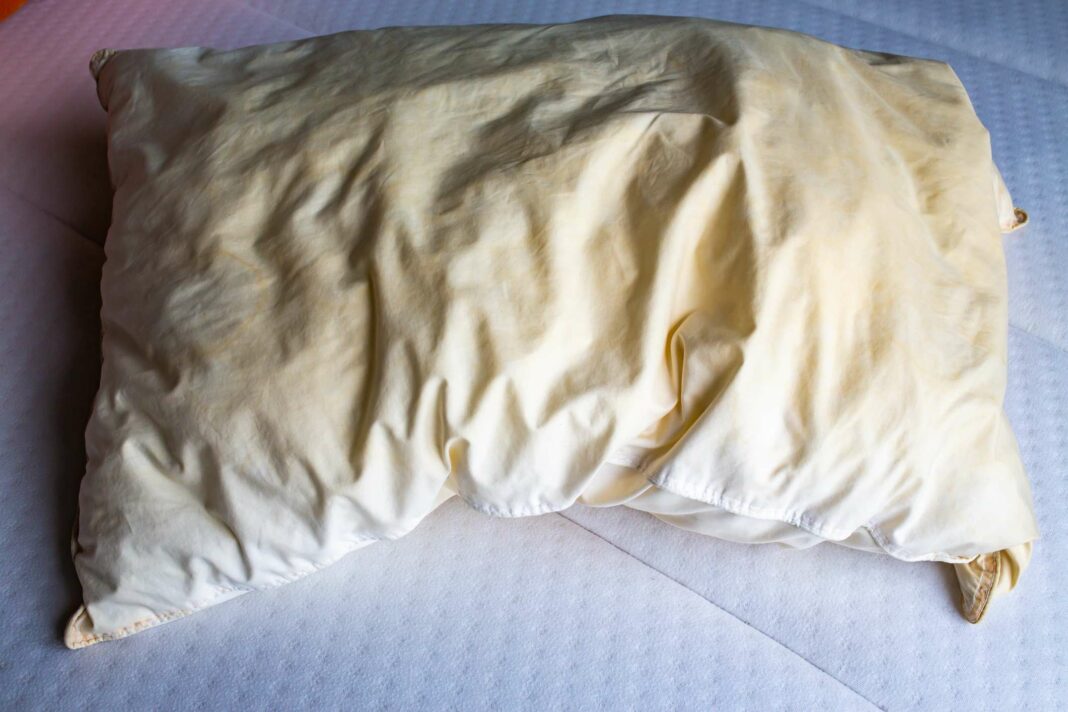Humans spend a significant portion of their day sleeping, leading to various natural processes that can result in unsightly yellow stains on pillows. These stains, primarily caused by sweat, skin oils, and hair products, can lead to health issues if pillows are not replaced. To prevent stains, using protective covers and changing pillowcases regularly is recommended. For cleaning, washing at high temperatures and using stain treatments can help, but older stains might necessitate buying new pillows.
Humans typically spend around one-third of their day asleep, which means our pillows endure quite a bit over time. During sleep, various processes occur that often go unnoticed—such as sweating, shedding skin cells, and even drooling.
While these occurrences are completely natural, they can lead to pillows becoming unsightly and contaminated. Whether covered or not, pillows tend to develop those familiar yellow stains over time.
In this article, we’ll explore effective ways to tackle unsightly yellowed pillows and when it’s time to consider replacing them.
Understanding the Causes of Yellow Stains on Pillows
Yellow stains are a common issue that develops with prolonged use of pillows. The primary offenders are sweat and skin oils that our bodies release while we sleep. Additionally, sebum from the scalp accumulates, and various hair care products like creams and gels can contribute to the problem.
Even showering before bed might not completely prevent these stains from forming. In fact, going to bed with wet or damp hair could promote mold growth within the pillow.
If your pillow has become significantly soiled, it’s crucial to replace it. Failing to do so could lead to health issues such as allergic reactions and respiratory problems, as damp pillows provide a breeding ground for dust mites and bacteria.
Tips for Preventing Yellow Stains on Pillows
To combat the development of stains, consider using a protective cover beneath the pillowcase. This approach not only helps allergy sufferers but also extends the life of more expensive pillows that you’d prefer not to replace frequently.
Moreover, changing pillow covers regularly is essential—experts recommend doing this weekly. While many may find this challenging, try to establish a routine that works for you.
Each morning, allow your pillow to air out thoroughly to help moisture escape. Shaking it vigorously can also be beneficial, as it revitalizes the down or filling inside.
Cleaning Strategies for Yellowed Pillows
For lighter stains, a standard washing might do the trick. Always refer to the manufacturer’s guidelines on the label; washing at 60 degrees Celsius can eliminate mold spores and many bacteria. Additionally, pre-treat fabric with stain sprays specifically designed for sweat marks.
If you’re still struggling with persistent stains, consider using stronger solutions before washing. A mixture of hydrogen peroxide and water (1:5 ratio) or vinegar and water (1:3 ratio) can be effective for stain treatment, followed by a machine wash.
Before using your pillows again, ensure they are completely dry. Ideally, lay them out in direct sunlight for an extended period, as UV rays effectively kill germs and help to bleach away stains.
It can be challenging to eliminate older stains completely. If your pillow hasn’t been washed in a while, it may be worth investing in a new one and using a protective cover moving forward.
Conclusion
Let’s be honest: washing all your pillow covers weekly is a feat very few can achieve. Nonetheless, frequent cleaning of pillows is advisable, even if yellow stains typically don’t pose major health risks. After all, while a lovely cover might help, it can’t hide the unsightly appearance of a stained pillow.
